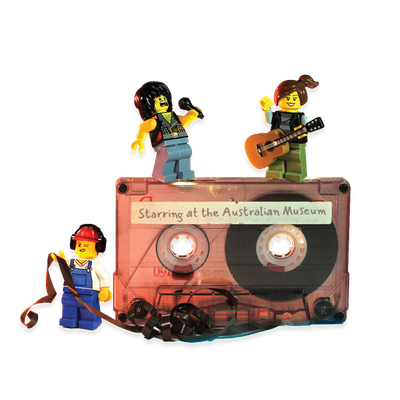Your search returned 56 results
By Page Type
By Tag
- All
- fish (966)
- blog (696)
- fishes of sydney harbour (401)
- First Nations (299)
- Blog (236)
- AMRI (169)
- archives (164)
- Eureka Prizes (146)
- Aboriginal and Torres Strait Islander (135)
- insect (126)
- Ichthyology (124)
- geoscience (109)
- minerals (102)
- climate change (99)
- podcast (94)
- Fish (91)
- Anthropology (89)
- International collections (80)
- Minerals Gallery (78)
- wildlife of sydney (78)
- Labridae (77)
- frog (74)
- gemstone (70)
- photography (66)
- history (64)
- Mollusca (60)
- gem (59)
- staff (59)
- Birds (56)
- Gems (56)
- Indonesia (56)
- education (56)
- shark (55)
- AMplify (54)
- people (53)
- earth sciences (50)
- exhibition (50)
- past exhibitions (50)
- Gobiidae (48)
- sustainability (46)
- Pomacentridae (45)
- Serranidae (44)
- lifelong learning (42)
- science (42)
- Earth and Environmental Science (41)
- Syngnathidae (41)
- Ancient Egypt (40)
- Bali (40)
- bird (40)
- dangerous australians (40)
-
Wahnes’ Parotia
https://australian.museum/about/history/exhibitions/birds-of-paradise/wahnes-parotia/Wahnes’ Parotia, Birds of Paradise
-
Eastern Parotia
https://australian.museum/about/history/exhibitions/birds-of-paradise/eastern-parotia/Eastern Parotia, Birds of Paradise
-
Rituals of Seduction: Birds of Paradise
https://australian.museum/about/history/exhibitions/birds-of-paradise/This exhibition featured a selection of the Museum’s collections from the Southern Highlands, Eastern Highlands and Western Highlands, including a variety of human hair wigs, feathered headdress, judge wigs, shells woven aprons and shell forehead ornaments.
-
World Migratory Bird Day 2013
https://australian.museum/learn/news/blog/world-migratory-bird-day-2013/To recognise World Migratory Bird Day Australian Museum Streamwatch volunteers participated in a wetlands day at Bicentennial Park.
-
Striated Pardalote
https://australian.museum/learn/animals/birds/striated-pardalote/Pardalotes generally feed in the canopies of tall eucalypts, making them difficult to see.
-
Willie Wagtail
https://australian.museum/learn/animals/birds/willie-wagtail/The Willie Wagtail is often found in the company of cattle and sheep. They either run behind the moving animal snatching insects as they are disturbed, or sit on the animal's back, darting off to capture a flying insect and then returning to its mobile perch.
-
Discover more
2025 Australian Geographic Nature Photographer of the Year
Special exhibition
Free entry
Now open -
Discover more
Unfinished Business
Special exhibition
Free entry
Now open -
Discover more
Wansolmoana
Permanent exhibition
Free entry
Open daily -
Find out more
Burra
Permanent kids learning space
Free entry
10am - 4.30pm![]()
-
Discover more
Minerals
Permanent exhibition
Free entry
Open daily![]()




